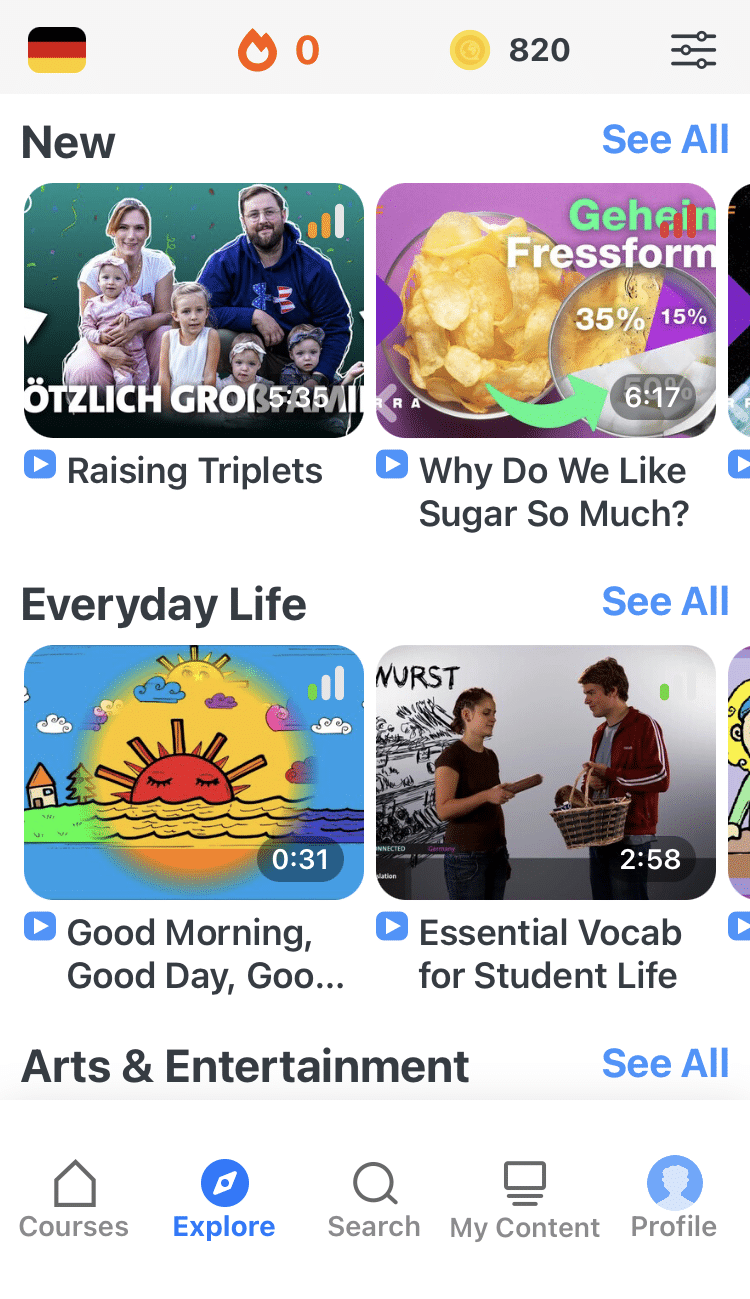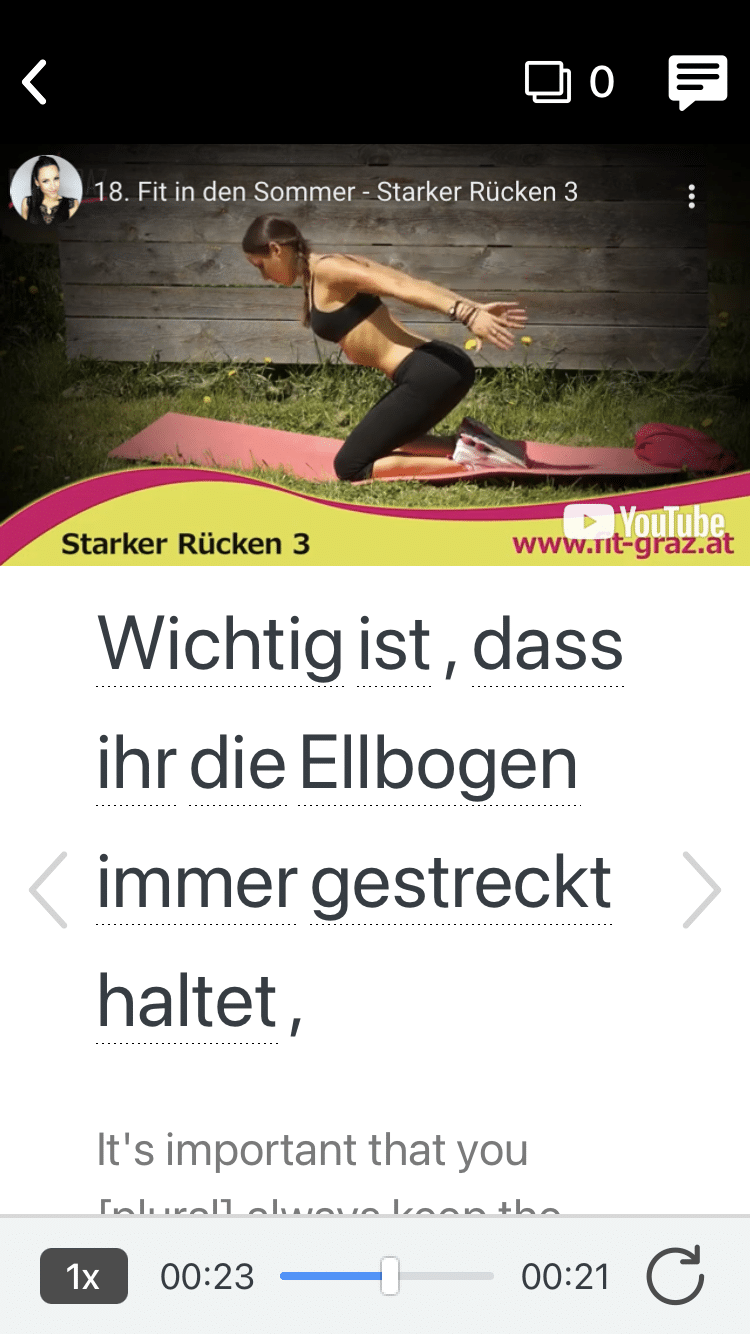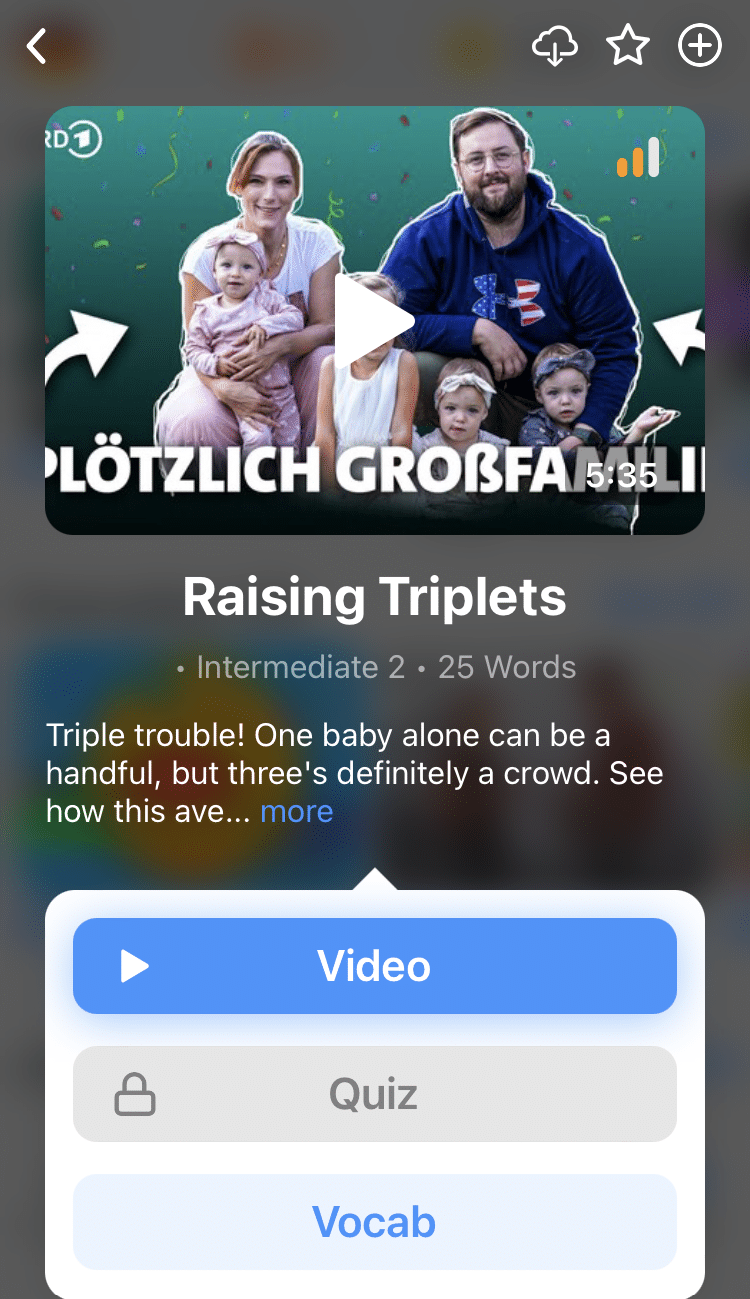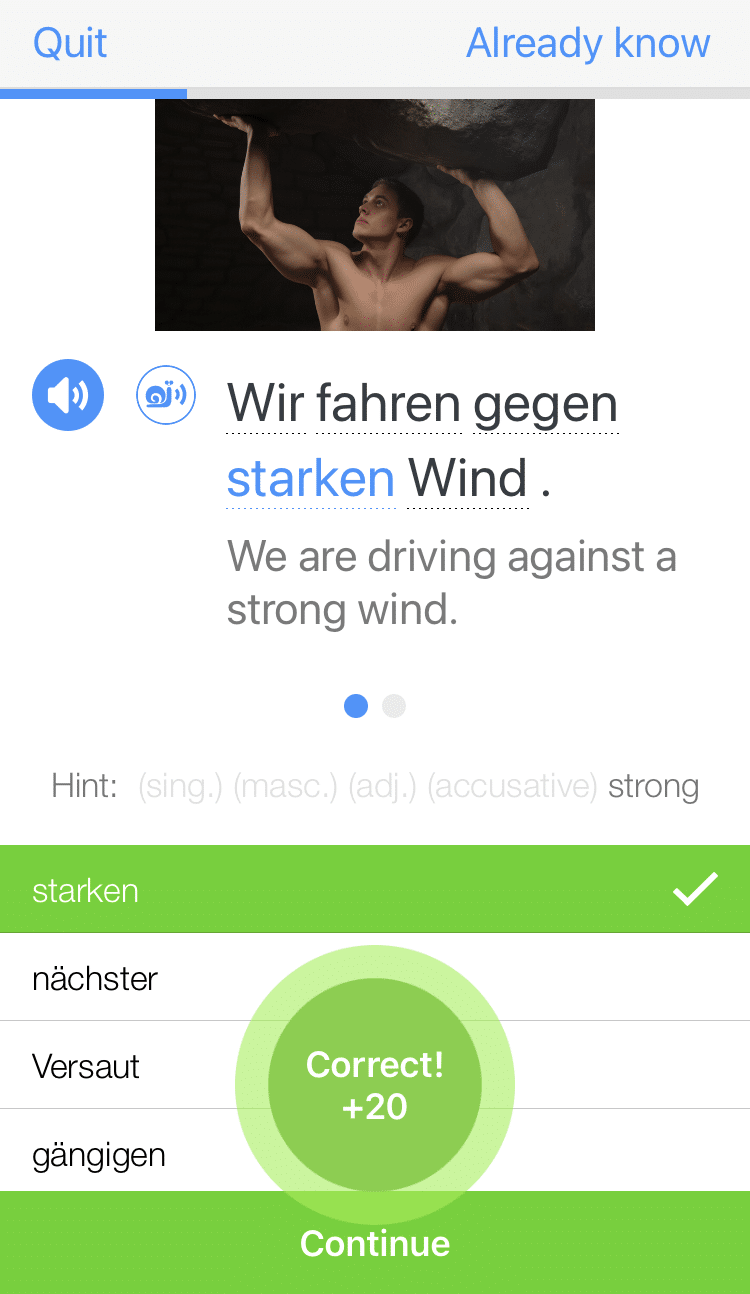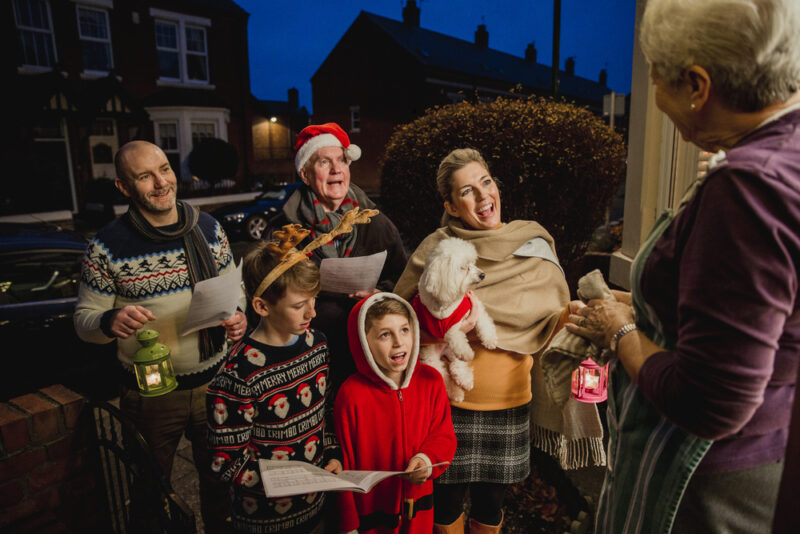
8 Jolly German Christmas Songs
It must be that time of the year because Christmas songs are starting to ring throughout homes, shopping malls and even airports.
The spirit of Christmas, and the entire holiday season, is not complete without reading Christmas stories and poems, watching Christmas movies and, of course, singing carols with family and friends!
The lucky thing for you German learners is that this delightful holiday tradition can help you pick up useful festive words and phrases!
Not only do the Germans love Christmas, but many of the Christmas songs we know and love have German/Austrian roots.
I’ve jotted down some of the more traditional songs I’ve heard at the Christkindlmarket in Chicago, and put together a list of the top eight German Christmas songs that really bring about the holiday spirit.
Contents
- 1. “Stille Nacht” (Silent Night)
- 2. “O Tannenbaum” (Oh Christmas Tree)
- 3. “Weiße Weihnacht” (White Christmas)
- 4. “Alle Jahre wieder” (Every Year)
- 5. “Ihr Kinderlein kommet” (Oh Come, Little Children)
- 6. “Es ist ein Ros’ entsprungen” (Lo, How a Rose E’er Blooming)
- 7. “Heidschi Bumbeidschi” (Go to Sleep)
- 8. “Kling, Glöckchen” (Ring, Little Bell)
- How Can German Christmas Songs Help Your Language Learning?
- And One More Thing...
Download: This blog post is available as a convenient and portable PDF that you can take anywhere. Click here to get a copy. (Download)
1. “Stille Nacht” (Silent Night)
Lyrics and translation: “Stille Nacht” lyrics
“Silent Night” is a popular song all across the world, but its roots come straight from a small Austrian village called Oberndorf. The story goes that on Christmas Eve in 1818, a pastor by the name of Joseph Mohr was struggling to find a way to play music for the night’s church services, since his organ was ruined due to a recent flood.
Unfazed, the pastor grabbed a Christmas poem he’d written a few years earlier and brought it to his friend Franz Gruber, an organist living in a neighboring town. It turns out Gruber was able to create a guitar-accompanied song in just a few hours, saving the Christmas service and producing a world-renowned song in the process.
Some not so commonly used words dance throughout the “Stille Nacht” lyrics, including:
heilig (holy)
himmlisch (heavenly)
der Ton / die Töne (sound / sounds)
2. “O Tannenbaum” (Oh Christmas Tree)
Lyrics and translation: “O Tannenbaum” lyrics
Interestingly enough, “O Tannenbaum” has nothing to do with Christmas. The composer and organist Ernst Anschütz set out to write a song that simply reflected the beauty and faithfulness of a regular fir tree. This occurred in 1824, yet as people began to use the fir as a Christmas tradition, the song gradually became recognized as a holiday song.
As for learning some vocabulary with the “O Tannenbaum” song, there are quite a few interesting words are sprinkled in there:
O Tannenbaum, o Tannenbaum, (O Christmas tree, o Christmas tree)
wie treu sind deine Blätter! (How loyal are your needles!)
Die Hoffnung und Beständigkeit (Your hope and durability)
Gibt Trost und Kraft (Provide comfort and strength)
zu jeder Zeit. (at any time.)
3. “Weiße Weihnacht” (White Christmas)
Lyrics and translation: “Weiße Weihnacht” lyrics
“Weiße Weihnacht,” or “White Christmas,” was not originally a German song. It was written for the Bing Crosby movie “Holiday Inn,” which was released in 1942. The song’s popularity caused it to be translated into various different languages, including German.
What are some less common vocabulary words and phrases you can pull from the German version of “White Christmas”?
Möcht’s auf Erden Frieden immer sein (May there always be peace on Earth)
Festlich strahlen Kerzen in allen Herzen (Candles shine merrily in all our hearts)
Vergeh’n Kummer heut’ und Weh. (Worry and woe vanish today.)
Although the footage is old, the “White Christmas” music video above was sung rather well by the boys choir Toelzer Knabenchor, and the video provides lyrics for you to follow along with.
4. “Alle Jahre wieder” (Every Year)
Lyrics and translation here: “Alle Jahre wieder” lyrics
The “Alle Jahre wieder” song comes with some varying renditions, but most of them have the same, if not similar, lyrics. For example, many people call the song “Alle Jahre wieder kommt das Christuskind,” which translates to “Every Year the Christ Child Comes Again.”
The first verse has some useful vocabulary:
Alle Jahre wieder (Every year again)
Kommt das Christuskind (Comes the Christ Child)
Auf die Erde nieder, (Down to earth)
Wo wir Menschen sind. (Where we humans are.)
If you’re interested in learning the language behind German songs like this, you can check out music videos on FluentU, which breaks down each line for you with interactive subtitles, transcripts and more.
5. “Ihr Kinderlein kommet” (Oh Come, Little Children)
Lyrics and translation here: “Ihr Kinderlein kommet” lyrics
Written by Christoph von Schmid and composed by German musician Johann Abraham Peter Schulz, “Ihr Kinderlein kommet” boasts a beautiful melody that brings the family together.
Notice how certain words like “ye” are represented in German:
Ihr Kinderlein, kommet, (Ye children come)
O kommet doch all! (O come ye all!)
Zur Krippe her kommet (Come to the cradle)
In Bethlehems Stall. (in Bethlehem’s stall.)
6. “Es ist ein Ros’ entsprungen” (Lo, How a Rose E’er Blooming)
Lyrics and translation: “Es ist ein Ros’entsprungen” lyrics
The authors of this song are unknown, but it’s certain that the lyrics come from Germany. Throughout the years, composers added a few lines to create a more fruitful story about how Mary learned she was to become the mother of Jesus.
The first two lines reveal the complexity of the words, because various contractions and cutoff words exist:
Es ist ein Ros’ entsprungen (Lo, how a rose e’er blooming)
Aus einer Wurzel zart. (From tender stem hath sprung!)
Here’s a solid video with English subtitles in addition to the a cappella version above (which has both German and English subtitles).
7. “Heidschi Bumbeidschi” (Go to Sleep)
Lyrics and translation here: “Heidschi Bumbeidschi” lyrics
The “Heidschi Bumbeidschi” song technically means “Go to Sleep,” but the translation is rough. This is most likely because the creator is unknown. The song, originally intended to be used as a lullaby, comes from the beginning of the 19th century. It eventually became used as a Christmas song, although this use is technically incorrect.
My favorite line is when they talk about the “snow white horse” towards the end, since you don’t see this kind of vocab often:
Da fahrt di a schneeweißer Schimml (There goes a snow white horse)
8. “Kling, Glöckchen” (Ring, Little Bell)
Lyrics and translation: “Kling, Glöckchen” lyrics
Hailing from the 19th century, “Kling, Glöckchen” was meant to serve as traditional German folk music, yet it transformed into a Christmas song over the years. It was written by Karl Enslin and set to music by Benedikt Widmann.
This one is full of fun vocabulary:
How Can German Christmas Songs Help Your Language Learning?
- Practice pronunciation. German Christmas songs offer fun ways to practice your pronunciation. For example, you might find it difficult to pronounce a few words in the Die Hoffnung und Beständigkeit line of “O Tannenbaum” (see #2 below), but when you sing that long word, Beständigkeit, in the “Oh Christmas Tree” melody, it rolls easier off the tongue.
- Learn words easier. Songs provide unique opportunities to remember certain words, since rhymes, rhythms and melodies are all on your side when it comes to memorizing. Using “O Tannenbaum” again, hearing this song and singing along will quickly lock the German word for “Christmas tree” into your memory, since it’s repeated so many times.
- Collaborate with other learners. You can sing these songs with other people, making it a more collaborative effort. Here’s a suggestion: Host a German Christmas party (via Meetup) with other learners and/or native speakers. Play some German Christmas songs while munching on holiday treats. Pass out lyrics so everyone can sing along, and after the song, discuss which words you had trouble with.
- Mix three language skills together. Songs bring speaking, listening and reading into the equation, since you also have to look at the lyrics while singing. You can practice by yourself by reading along with the lyrics as you listen (links below). This way, you see how words are spelled. Also, take turns listening to hear how words are pronounced, and then singing along to mimic the same pronunciation.
Now that you’ve had a chance to learn about some of the best German Christmas songs, load up your YouTube or iTunes playlist and sing along for a truly German Christmas.
These songs not only let you further enjoy the holidays, but they improve how you translate, read, pronounce and recognize festive words and phrases. Merry Christmas!
Download: This blog post is available as a convenient and portable PDF that you can take anywhere. Click here to get a copy. (Download)
And One More Thing...
Want to know the key to learning German effectively?
It's using the right content and tools, like FluentU has to offer! Browse hundreds of videos, take endless quizzes and master the German language faster than you've ever imagine!
Watching a fun video, but having trouble understanding it? FluentU brings native videos within reach with interactive subtitles.
You can tap on any word to look it up instantly. Every definition has examples that have been written to help you understand how the word is used. If you see an interesting word you don't know, you can add it to a vocabulary list.
And FluentU isn't just for watching videos. It's a complete platform for learning. It's designed to effectively teach you all the vocabulary from any video. Swipe left or right to see more examples of the word you're on.
The best part is that FluentU keeps track of the vocabulary that you're learning, and gives you extra practice with difficult words. It'll even remind you when it’s time to review what you’ve learned.
Start using the FluentU website on your computer or tablet or, better yet, download the FluentU app from the iTunes or Google Play store. Click here to take advantage of our current sale! (Expires at the end of this month.)
